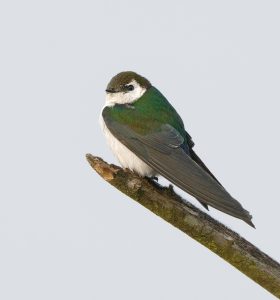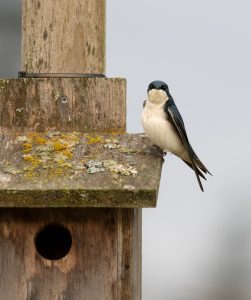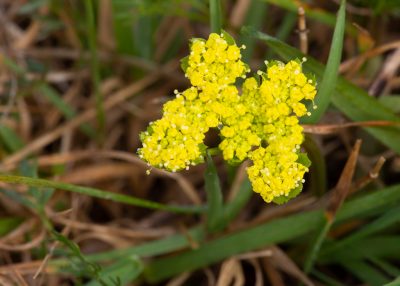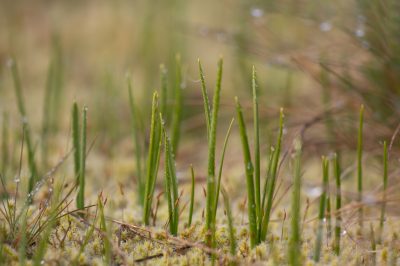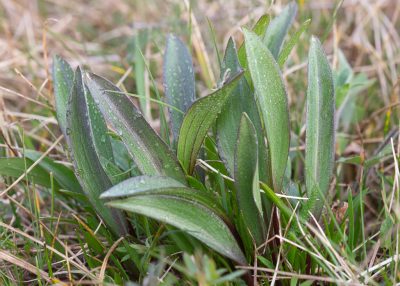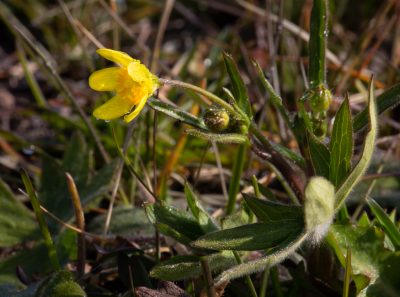Since the Stay Home, Stay Safe order came out, all the public South Sound Prairies have been closed for access for all activities.
Since I am lucky enough to have a few acres in the South Sound Prairies, and we maintain most of it as prairie, I thought I’d take a post or three to highlight a some of our backyard bird species that seem to be having a fair amount of success in the last few years. If this closure continues long, I’ll have to hope my prairie starts to put out more blooms than Spring gold.
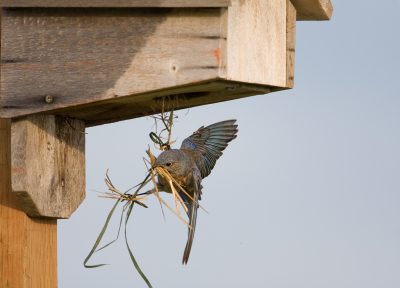
Female with nesting material. Note the hole in the bottom of the box intended for swallows.
The first species I’d like to talk about is the Western Bluebird (Sialia mexicana). We are at the normal edge of the range of this species and it was very rare in this area twenty years ago due to lack of nesting cavities and competition for them with European Starlings and other cavity dwellers. Dave Clouse and Jock Beal started a Bluebird box program in 1982 on what was then Fort Lewis. Sam Agnew, an avid volunteer helped expand the program on both Ft Lewis and McChord (now combined into JBLM) and twenty years ago The Nature conservancy started putting up boxes on Thurston county’s Glacial Heritage Preserve. As other prairies were acquired by The Nature Conservancy and later The Center for Natural Lands Management, more nest boxes were installed at those preserves and are regularly monitored. The last few years have seen very good nesting success (they seemed to like those hot dry summers we had. There was a slight dip in productivity with last year’s milder weather, but it was still a good year).
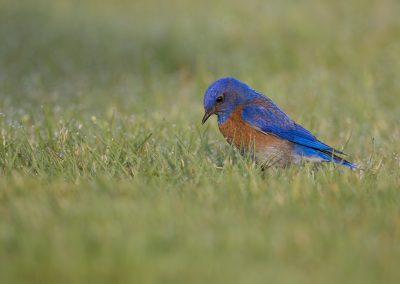
Male Bluebird hunting in lawn, 2008.
Our close relationship with this species began in 2008 when a pair showed up, chose the most inappropriate nest box on our property, and proceeded to raise three broods.
From the beginning, they were a fairly confiding species to deal with photographically, and with a little patience it was possible to get reasonably close as in the image of the male foraging in the lawn below.
Unfortunately, as some of you may recall, December of 2008 brought heavy snow to the South Sound and it was capped with freezing rain creating a coat of ice over the snow. Although the range maps in the field guides don’t show it, Western Bluebirds usually winter over in this area as ours tried to do in 2008. Since we were snowed in as much as the birds were snowed out, we tried putting out some feed that insectivores might be interested in, but they didn’t make the connection.
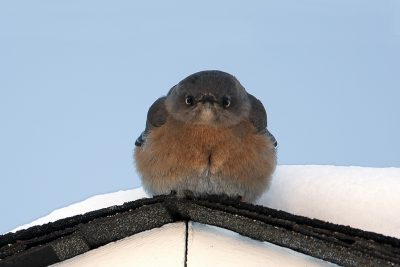
Puffed up young Bluebird trying to handle the snow and cold. We found it in the snow the next morning.
Most of the birds didn’t make it, but apparently at least one did because we had Bluebirds again in 2009 and almost every year since (they deserted us for the neighbor one year).
We decided that we didn’t want to watch so many Bluebirds die in the winter again, so when they had fledglings the next year we decided to try to train them to eat mealworms placed in a bowl. As usually seems to be the case, a fledgling was the first to try something new, but it didn’t take long for the others to catch on.
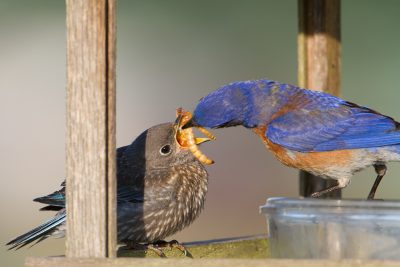
This image from 2013 illustrated the feeding process for new fledglings.
The young also get plenty of natural food with this program since we just give them a few worms a day to train them. Interestingly, Sue Danver forwarded a recent study to me done on Eastern Bluebirds that showed an increase in survival and decrease in parasite load for nestlings where there was supplemental food provided.
The first brood in the spring seems to mostly be fed on the abundant insect larvae available at the time, so the mealworms fit right in. But even in August, as in this image, they manage to find larvae.
Adult insects also form a large portion of the diet of the youngsters as these images of the adults carrying food to the nestlings show.
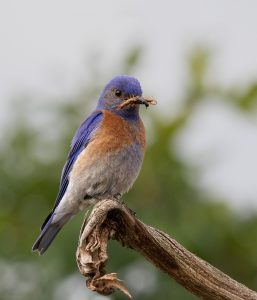
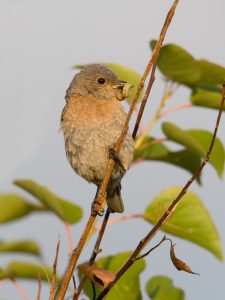
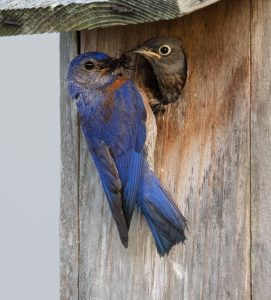
Taken in late July. Note the rather bedraggled plumage. Raising babies is hard work.
The Bluebirds have paired off for this year and I saw the female carrying nesting material a few days ago. We’ve started supplemental feeding and it’s great fun to have them waiting for me when I walk out with the bowl.
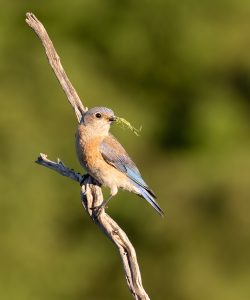
Female gathering nesting material.
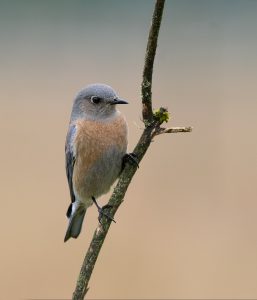
Female Western Bluebird coming for mealworms on March 21, 2020.
My hope is that they continue to multiply and eventually we get more than one pair at a time on our property. As a photographer, I would love to get more images like this one:
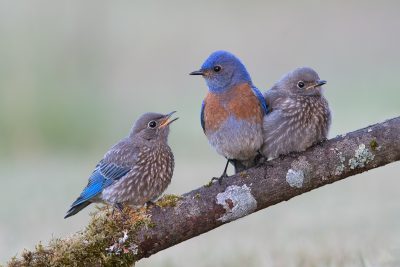
Male Western Bluebird with two fledglings.
All photographs courtesy of Dennis Plank.

